This post may contain affiliate links. Please read our disclosure policy.
This 30-minute vegan Pad Thai is big on flavor and comes with the most amazing sweet-salty-sour sauce! This vegetarian Pad Thai is, without a doubt, a must-try!
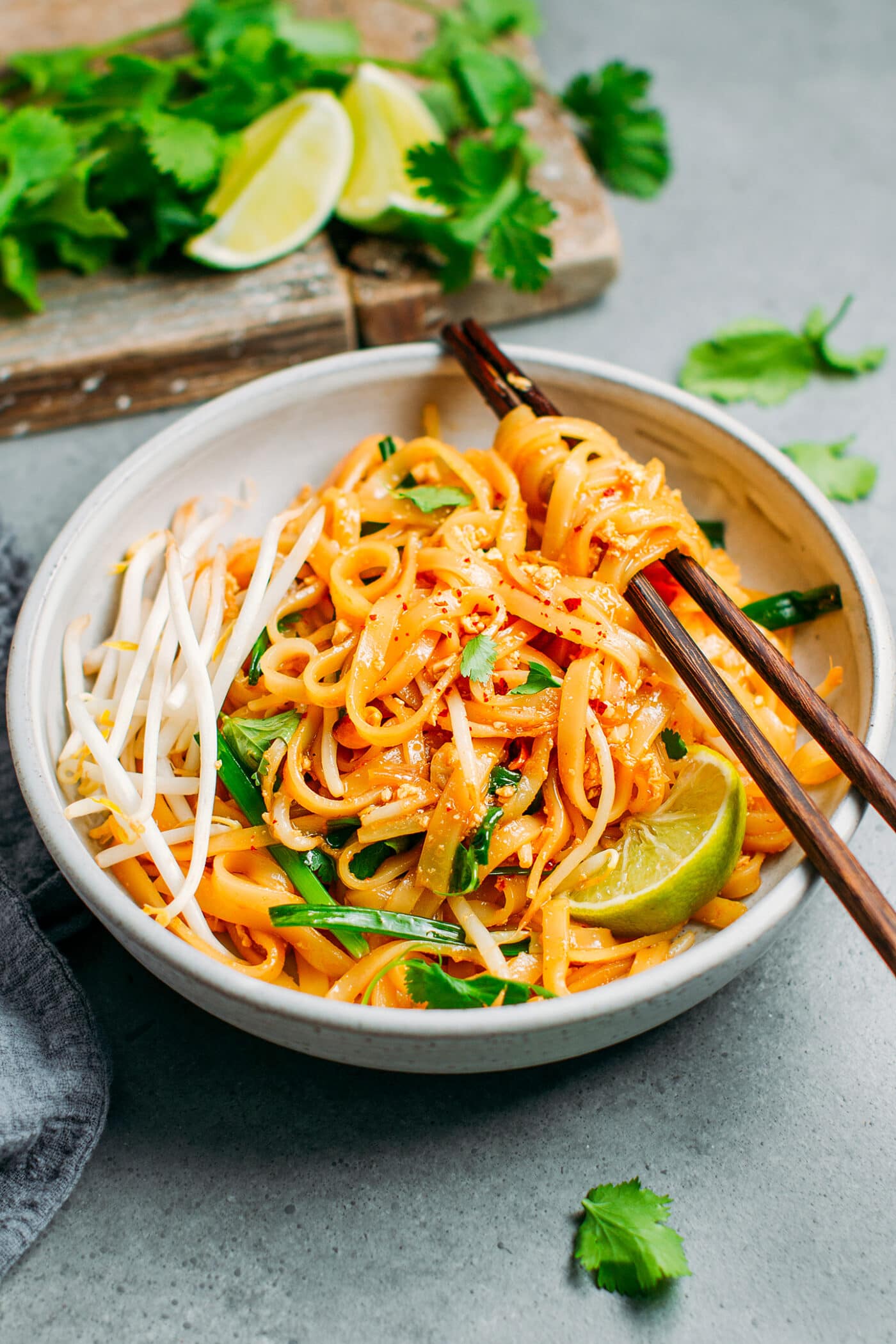
📘 What Is Pad Thai
Pad Thai is a noodle dish that originated in Thailand during the mid-20th century. It consists of rice noodles stir-fried with bean sprouts, Chinese chives, and eggs and coated with a salty, sweet, and sour sauce.
This version is vegan, and while it is not completely authentic, I made it as close as possible without using eggs, shrimp, or fish sauce. It has, however, that restaurant quality!
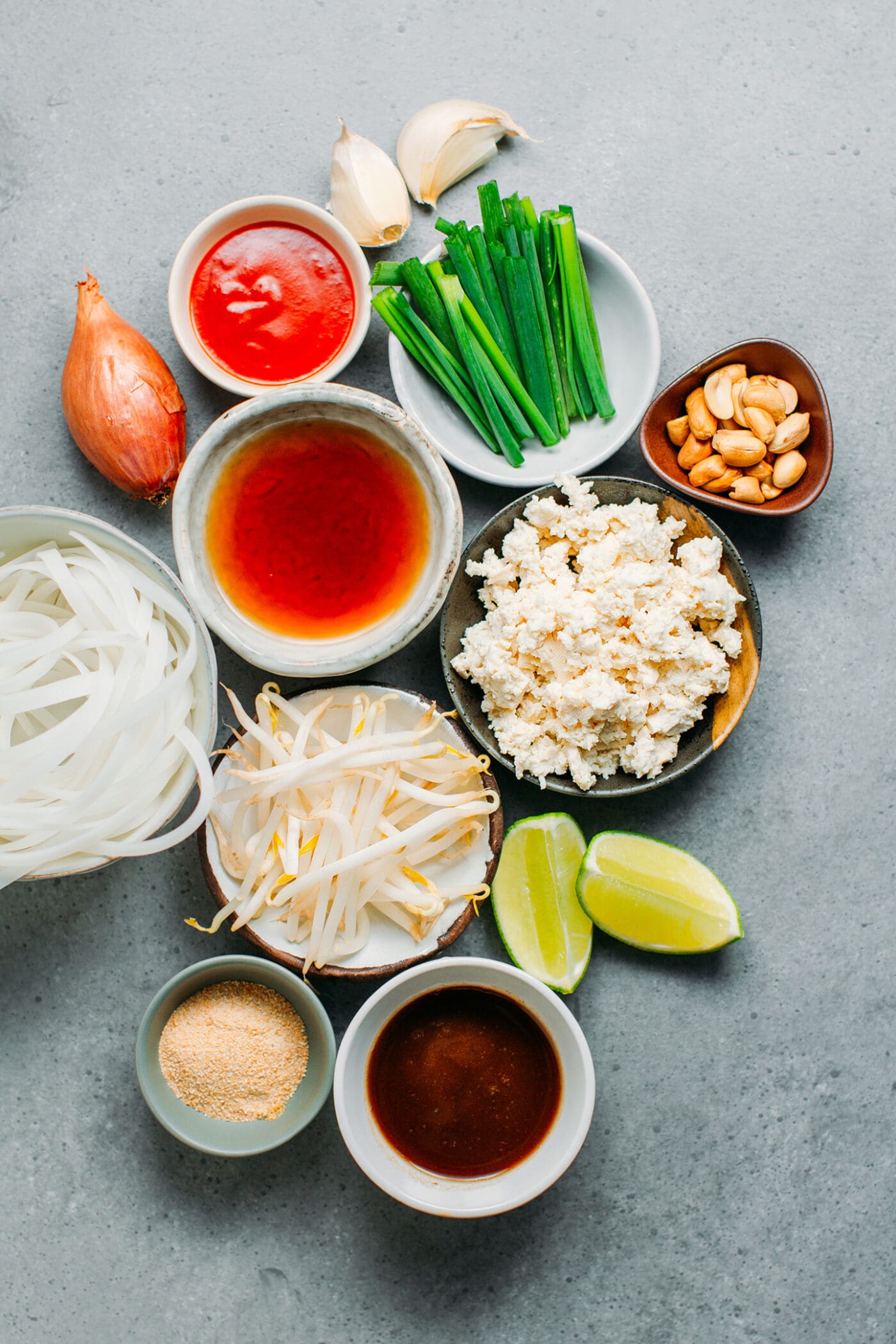
🥣 How to Make It
First, you want to prepare the sauce, which is a vital component of this noodle dish.
Sauce
Here is what you will need to prepare the sauce:
- Tamarind juice – It adds a subtle fruity, sweet, and sour flavor to the sauce. To make tamarind juice, pour boiling water over tamarind pulp and let it sit for about 10 minutes. Strain the pulp and keep the juice.
- Soy sauce – For umami and saltiness. If you want to keep this recipe gluten-free, use tamari or coconut aminos. Feel free to use Thai soy sauce if you want a more authentic taste.
- Sweet chili sauce – For some heat. You can get sweet chili sauce online or check my homemade sweet chili sauce recipe.
- Vegan fish sauce – An essential ingredient in this recipe! To be honest, there is no substitute if you want to get that rich and deep flavor, so unique to Pad Thai. I highly recommend this vegan fish sauce. It smells and tastes almost the same as real fish sauce.
- Sugar – To balance the saltiness and the spiciness. Since we will make caramel, I highly recommend using white or palm sugar.
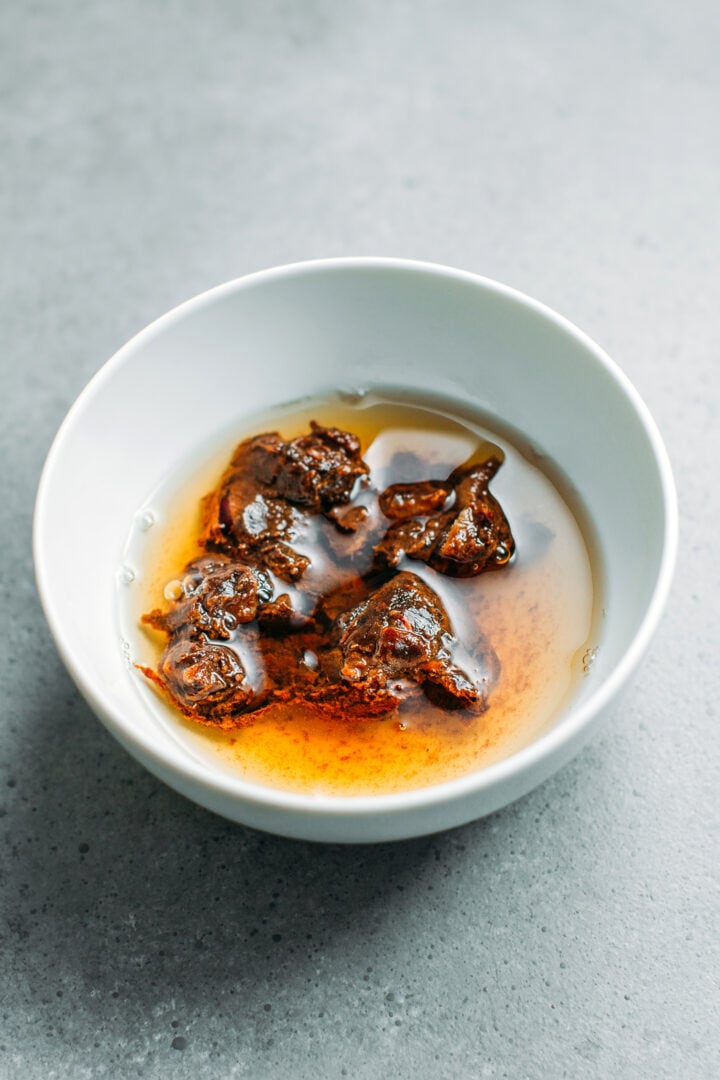

I’m sharing two secrets that, in my opinion, take this Pad Thai to another level:
- Start by making a caramel – Instead of mixing the sugar with the rest of the sauce, caramelize it until golden brown and deglaze it with water and the rest of the ingredients. This extra step will add a richer flavor and will also help the sauce thicken, allowing it to coat the noodles even better!
- Add roasted rice powder – This is just a personal preference, but after trying a Pad Thai from a restaurant that used roasted rice powder, I couldn’t go back to the basic version! The addition of rice powder brings an addicting nutty, and toasty flavor. It’s totally optional, though, but if you can get your hands on it, it’s worth trying.

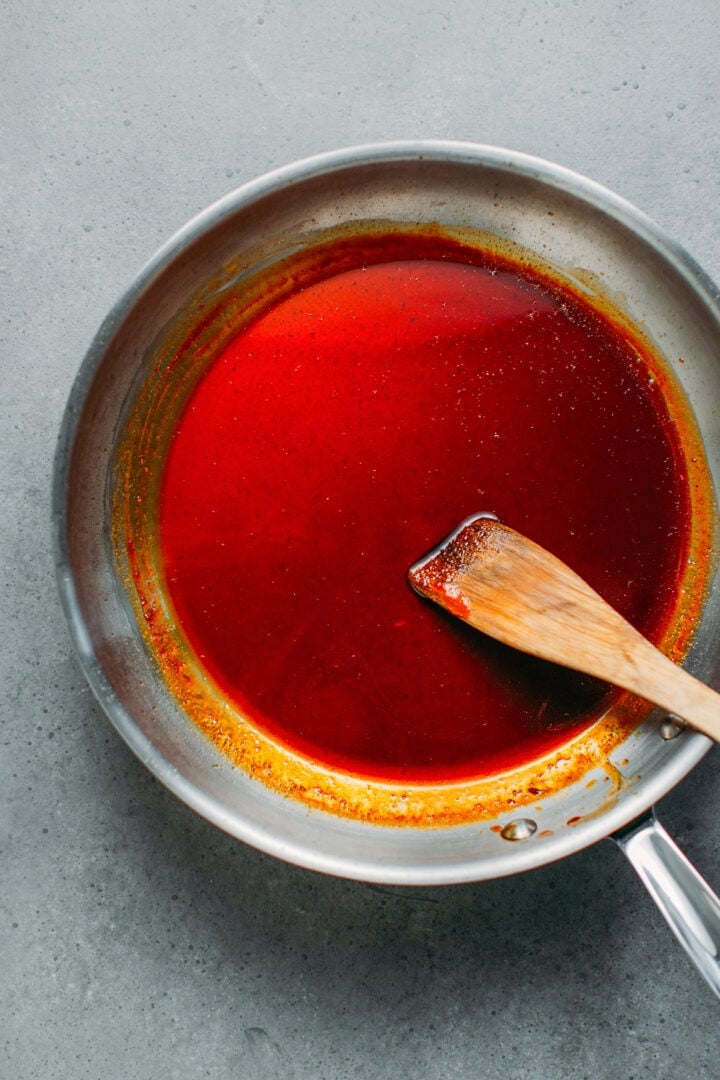
Once the sugar has turned into a golden brown caramel, deglaze the pan with two tablespoons of water, and add the remaining ingredients. Cook for 1 minute and set aside. The sauce is now ready!
Stir-Fry
To make the stir-fry, here is what you will need:
- Garlic and shallots
- Tofu – Authentic Pad Thai usually contains scrambled eggs. To mimic the eggs, we will be using scrambled tofu! I recommend going with medium tofu in order to get a soft texture. While optional, you can add a pinch of turmeric and kala namak salt for a yellow color and an eggy flavor.
- Green onions – Preferably Chinese chives for a garlicky flavor. If you can’t find Chinese chives, use scallions/green onions.
- Noodles – Use flat white rice noodles. I recommend cutting the noodles in half. This way, it will mix better with the tofu and green onions.
- Peanuts – Use roasted peanuts.
While Pad Thai usually doesn’t contain any carrots, mushrooms, or bell peppers, we won’t judge if you sneak in a few!
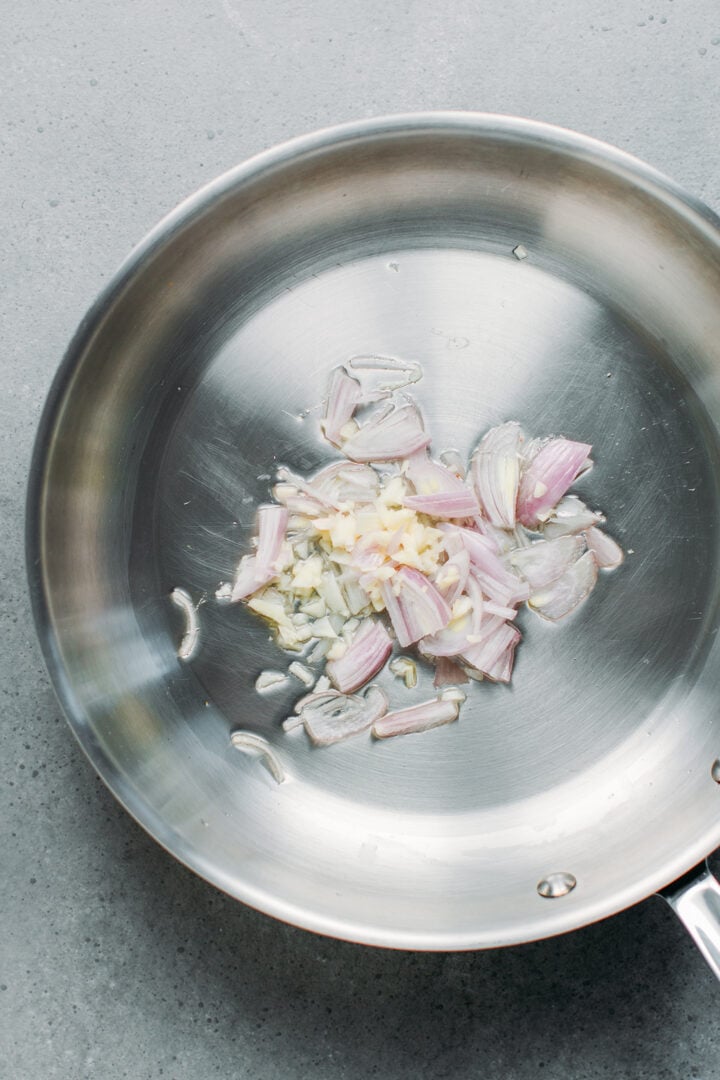
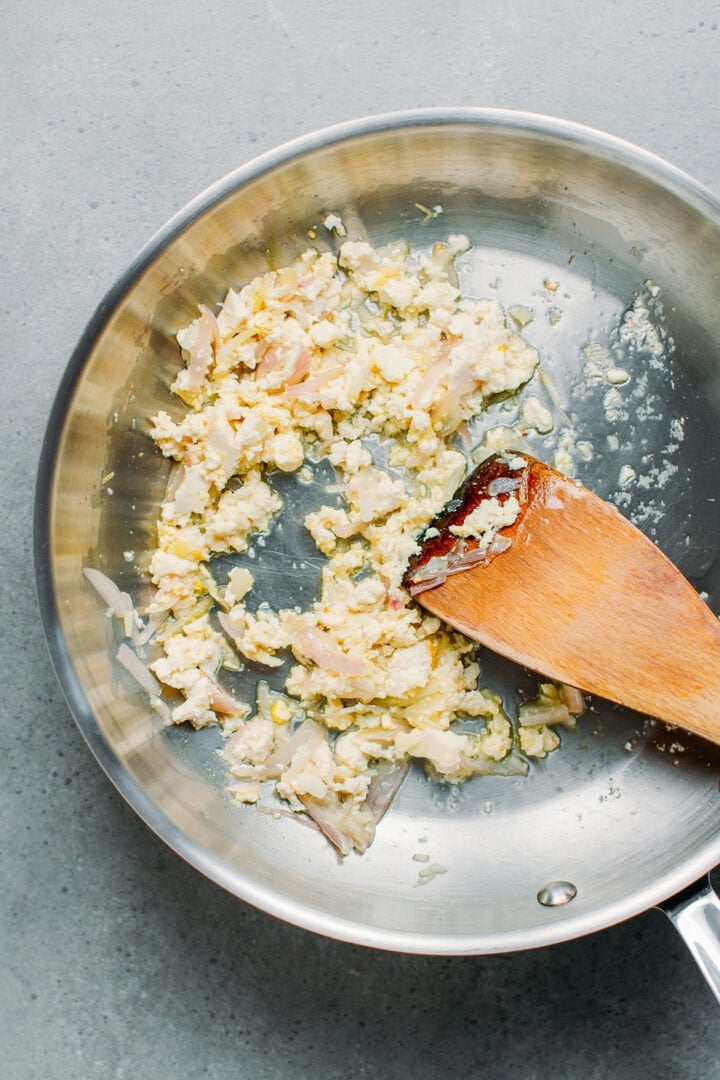
Start by sautéing minced garlic and shallots for a few minutes or until fragrant. Next, add the scrambled tofu and cook for one more minute.
In the meantime, cook the rice noodles. Drain and add the noodles to the skillet with the chopped green onions, bean sprouts, and sauce. Cook for 3-5 minutes, stirring to coat the noodles with the sauce.
Finally, remove from heat and top with crushed roasted peanuts and a squeeze of lime!

💬 FAQ
Tamarind pulp is available almost everywhere and will keep for years in the refrigerator, so you should definitely try to get your hands on it. If you really can’t find it, substitute it with lime juice and a teaspoon of sugar.
Long and flat rice noodles work best. However, almost any rice noodles will work.
To be honest, I highly do not recommend using a substitute. It’s the main ingredient of this Pad Thai.
Pad Thai will keep for up to 3 days in the refrigerator. Reheat in a non-stick skillet over medium heat.
You can easily make this recipe gluten-free by replacing the soy sauce with coconut aminos or tamari.

This vegan Pad Thai is one of my favorite noodle recipes! It is packed with flavor, quick to make, and better than takeout (and I ordered a lot!). I have no doubt it will quickly become a regular in your home, just like it did in mine!
🇹🇭 More Vegan Thai Recipes
⭐️ Did you like this recipe? Let us know in the comments below, and tag us on Facebook, Instagram, or Pinterest!


Save this recipe!
Enter your email below and I’ll send it to your inbox!
Plus, you will receive new recipes every week!

The Best Vegan Pad Thai
Ingredients
Pad Thai Sauce
- 3 tbsp (38 g) sugar
- 2 tbsp (30 ml) water
- 3 tbsp (45 ml) vegan fish sauce
- 1 tbsp (15 ml) sweet chili sauce
- 1 tbsp (15 ml) soy sauce
- 3 tbsp (45 ml) tamarind juice see notes
- 1 tbsp toasted rice powder optional
Pad Thai
- 2 tbsp (30 ml) oil
- 1 clove of garlic minced
- 1 shallot minced
- 1/2 cup (70 g) scrambled tofu use medium tofu
- 8 ounces (230 g) rice noodles
- 2 cups (200 g) bean sprouts
- 6-8 stalks Chinese chives cut into 2-inch long strips
- 1/4 cup (37 g) roasted peanuts slightly crushed
- for topping: cilantro, lime juice
Instructions
Pad Thai Sauce
- Add the sugar to a light-colored saucepan or skillet. Heat over medium heat for 2-3 minutes or until sugar has melted. Do not stir. Keep heating until the sugar gets a golden brown color and turns into caramel.
- As soon as the sugar has caramelized, deglaze with the 2 tablespoons of water. Be careful, as it will spit. Next, add the vegan fish sauce, sweet chili sauce, soy sauce, tamarind juice, and toasted rice powder if using. Let simmer for 1 minute or until the caramel has melted. Transfer the sauce to a small bowl and set aside.
Pad Thai
- Bring a large pot of water to a boil. Once boiling, cook the rice noodles according to the package instructions.
- In the meantime, heat the oil in a skillet or wok over medium heat. Once hot, add the minced garlic and shallot, and cook for 2-3 minutes or until fragrant.
- Add the scrambled tofu and cook for another minute. At this point, you can add a pinch of turmeric to give the tofu a yellow color, and a pinch of kala namak salt for an eggy taste.
- Add the drained cooked noodles, bean sprouts, Chinese chives, and the sauce. Cook for 2-3 minutes, stirring regularly to coat the noodles with the sauce.
- Remove from heat, top with crushed peanuts, a squeeze of lime, and serve immediately. This Pad Thai will keep for up to 3 days in the refrigerator.
Notes
Nutrition

About the Author
Thomas Pagot is the founder, photographer, and recipe developer behind Full of Plants. He created the blog in 2016 as a personal cookbook for vegan recipes. Through years of recipe development, Thomas has successfully grown Full of Plants into a trusted resource for plant-based recipes.


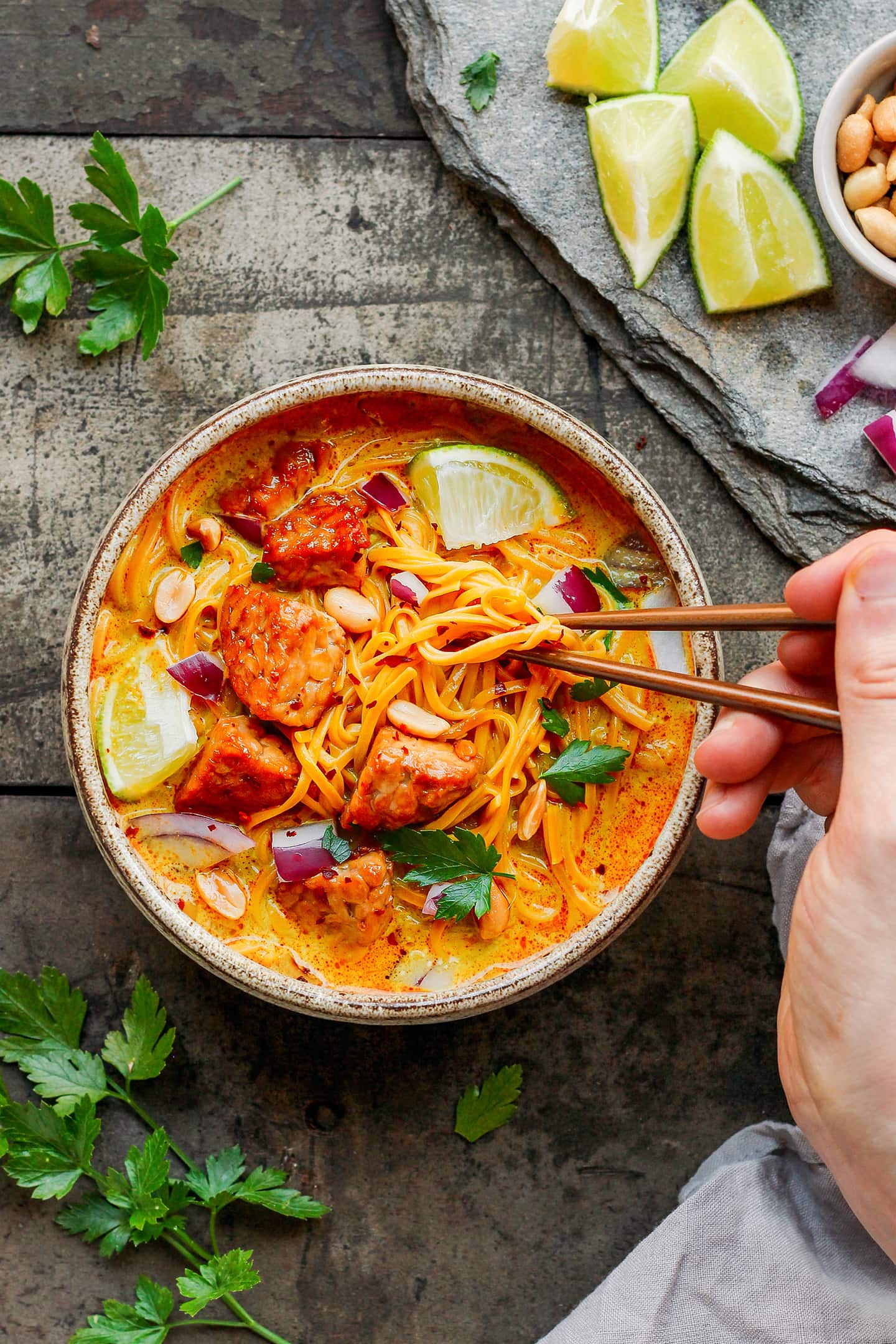
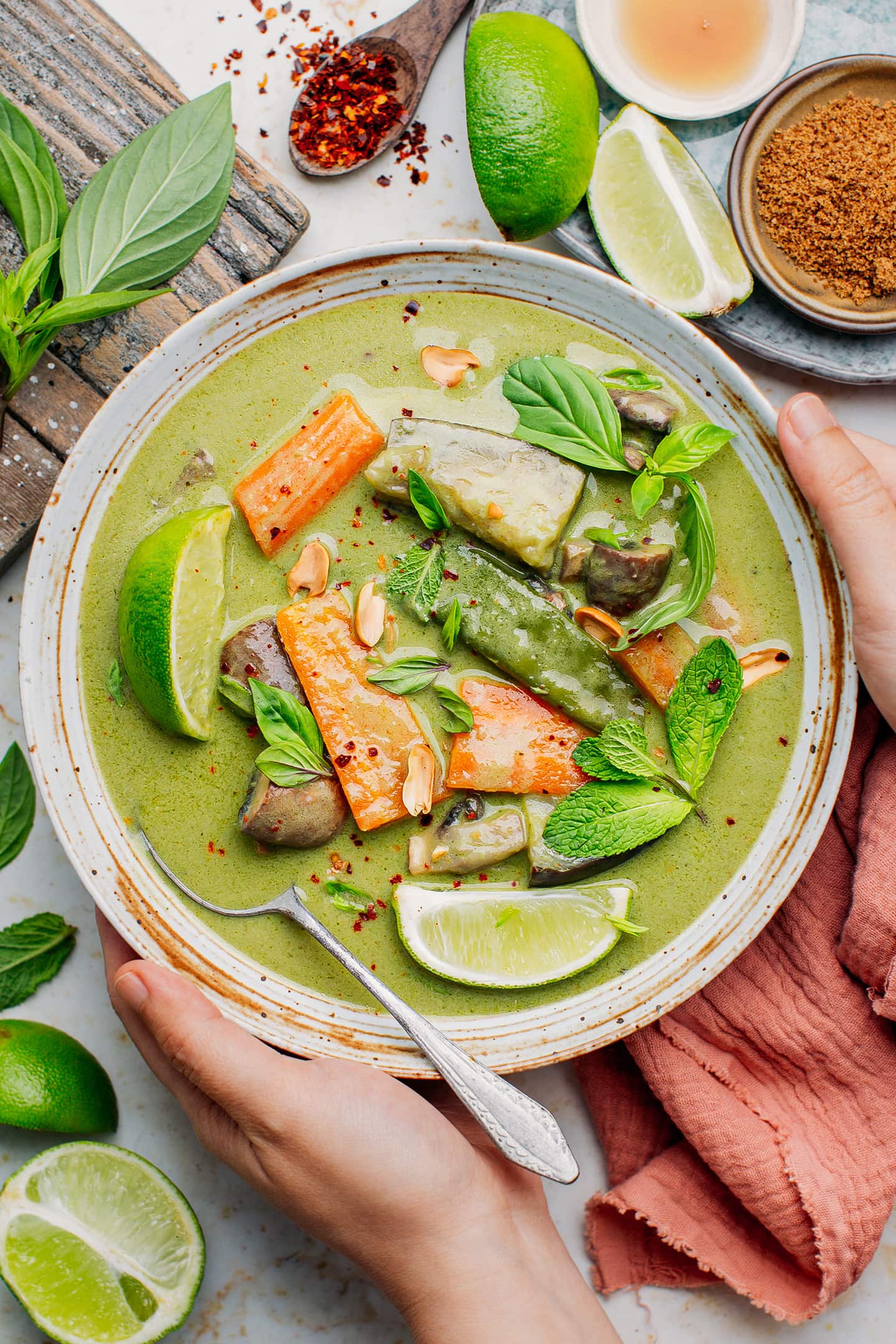


Leave a Comment
This really was the best vegan pad Thai!!! I’ve made multiple recipes and this was by far the closest to the real thing. Thank you, I can’t wait to try more of your recipes.
Thanks so much for your feedback Miriam! 🙂
This has become a family favorite recipe! It’s delicious. Even my kids love it and they hate everything. LOL!
Glad your whole family love this pad thai 🙂 Thanks for your feedback!
I’ll try it this weekend. Thank you for sharing.
Super recipe! My husband and I made this together and the whole family enjoyed. We looked up how to make roasted rice powder. We made two batches one for the noodles and tofu and one for just veggies (julienne carrots and zucchini, cauliflower, bok choy and celery). Will make some more tomorrow with the left over rice noodles!
(One small issue is that when my husband added water the caramel got hard. The water was probably way to cold so we just melted it down again).
Thanks for your feedback Tetyana, I really appreciate it 🙂
Yes, the caramel will harden at first and melt again after a couple of minutes.
I’ve never thought of me trying to make Pad Thai before. Although I love how it tastes, I’m kind of lazy to cook it all by myself. After following your instructions, somehow I succeeded in making my own dish. FOR THE FIRST TIME IN MY LIFE. And I didn’t even think of it could be so good like this. So happy😸
Glad you enjoyed the recipe Chihiro 😉 Thanks for your rating!
Yum! Everyone loved it! It was not too sweet compared to some other recipes I tried. My favorite pad thai recipe!
Thanks for your feedback Elise 😉
I can’t believe I just ordered a very pricy bottle of fish sauce! I will make this pad Thai when the sauce arrives.
Hope you will like it 😉 And a bottle lasts a long time!
Hi Thomas, the fish sauce link in the recipe takes me to a product called Red Boat fish sauce on Amazon. The ingredient list shows 80% anchovies. Is there an other vegan product you can recommend? Thanks.
Gary
Hi Gary,
If you are visiting from outside the US, Amazon sometimes redirects to the wrong product. I would recommend searching directly online in your country for a vegan fish sauce.
Hi Thomas, great suggestion. I found Vegan Supply in Vancouver. They carry Fysh Sauce and we’ll give it a try. Looking forward to trying your Phad Thai recipe when the sauce arrives.
Thanks
Gary
Glad to hear! 🙂
Hi Thomas, really looking forward to trying this! Could I use tamarind paste?
Hi Mara,
I believe tamarind paste is basically the same as what I called tamarind pulp. It’s a very compact and sticky paste.
Can’t wait to try this, Thomas! It sounds heavenly, and thanks for the detailed instrux.
Thanks Rose Anne! 🙂